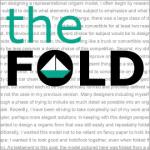
These are articles posted by The Fold editor all (who may or may not be the author; see byline for authorship). The Fold is the online magazine for members of OrigamiUSA. New articles are posted continuously over the two month period of each issue. To contribute to The Fold or for other questions, please see our FAQ.
OrigamiUSA members and those with an Access Pass, please sign in to access this article.
This wave model is fun to fold and has a lot of math in it!
OrigamiUSA members and those with an Access Pass, please sign in to access this article.
Diagrams for a heart variation based on a model by Edwin Corrie.
OrigamiUSA members and those with an Access Pass, please sign in to access this article.
A pleated cone sliced by multiple planes creates this geometric model reminiscent of a breaking wave.
OrigamiUSA members and those with an Access Pass, please sign in to access this article.
OrigamiUSA's 2011 Annual Collection included a peacock from Rikki Donachie made from a square. Here Rikki shares another peacock made from an A4 rectangle.
This paper presents a crease pattern for one-cut double happiness.
In this review we'll have a closer look at Kraft paper. If you are into complex folds, this might just be the perfect paper for your test folds.

OrigamiUSA members and those with an Access Pass, please sign in to access this article.
A compilation of quotes from attendees of the 2011 Pacific Coast Origami Convention in Bellevue, Washington.
OrigamiUSA members and those with an Access Pass, please sign in to access this article.
Diagrams for a classic puzzle, typically made of wood.
OrigamiUSA members and those with an Access Pass, please sign in to access this article.
Diagrams for a bracelet that appears woven.
OrigamiUSA members and those with an Access Pass, please sign in to access this article.
Paper folding exercises involving the golden section of a line, the golden rectangle, and the golden triangle provide interesting geometry-teaching supplements.
OrigamiUSA members and those with an Access Pass, please sign in to access this article.
Andrew Hudson reports on the 15th Anniversary Origami Colombia Convention, November 11-14, in Cali, Colombia.
OrigamiUSA members and those with an Access Pass, please sign in to access this article.
Crease patterns and video for two modular tree units with variations.
OrigamiUSA members and those with an Access Pass, please sign in to access this article.
Thinking about some special decoration for the upcoming holidays? Here is a great project created by Kindergarten students at Oahu’s Le Jardin Academy that would work great for any special celebration.
Italy is the place I chose for my first and second international conventions. Read inside why, and what happened from 8/12/2012 during four days of folding frenzy!
OrigamiUSA members and those with an Access Pass, please sign in to access this article.
Learn some of the history of origami geometry, as well as the story of Margherita Liazzolla Beloch, the first origami mathematician!
This last article in my video creation guide concentrates on three final tasks: adding subtitles, making your video available to others, and finally, advertising your video.
This time we're reviewing Crumpled Paper, which was introduced to the origami community by VOG. The unique texture of this paper makes it an absolute gem as it does not hinder the folding process for many types of models!
OrigamiUSA members and those with an Access Pass, please sign in to access this article.
A rotationally symmetric geometric shape, folded from a hexagon, based on Jeannine Mosely's "Bud".
OrigamiUSA members and those with an Access Pass, please sign in to access this article.
Giang Dinh applies his trademark minimalist style to create a hippo.


















